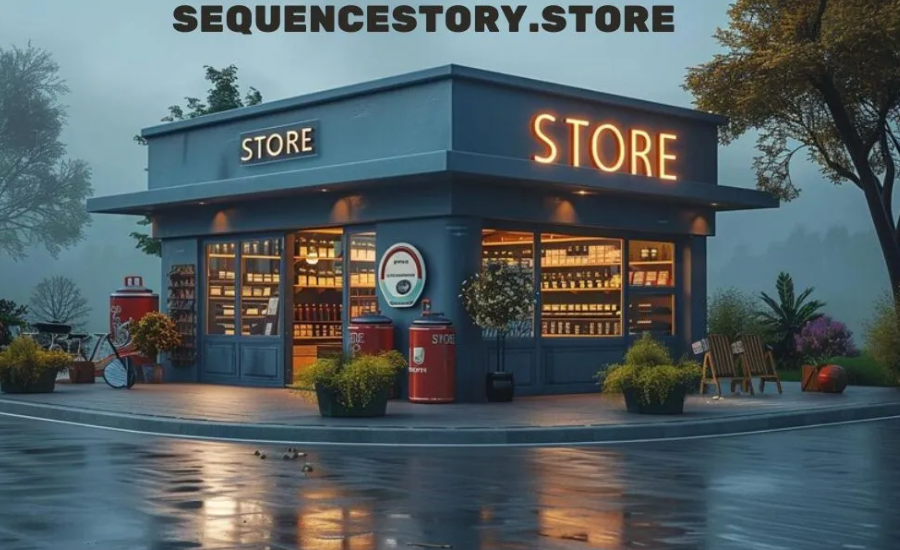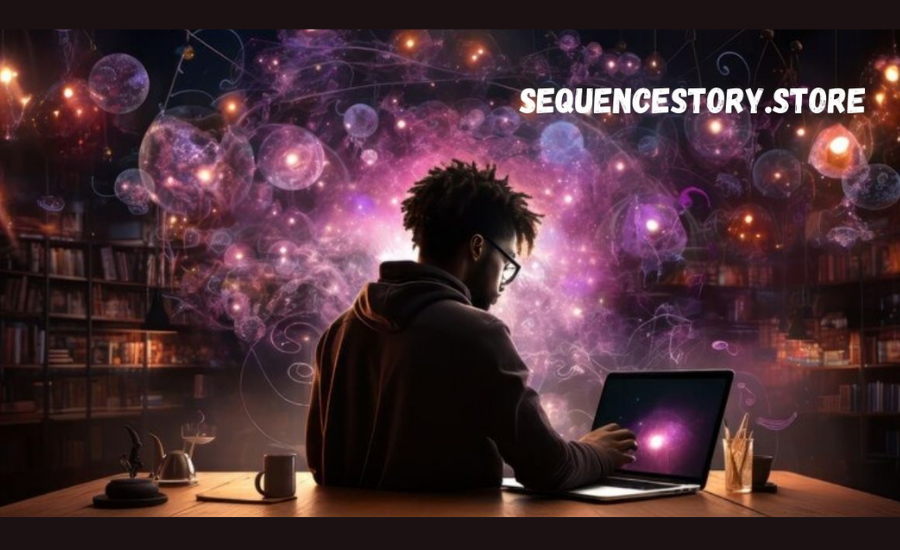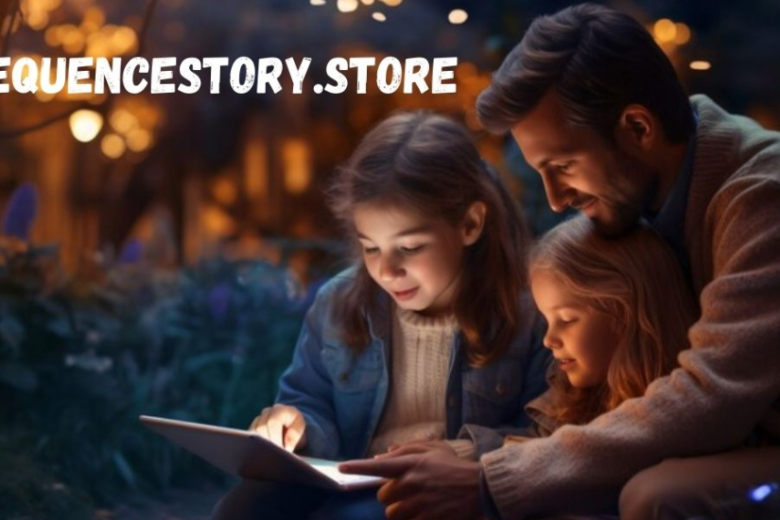Step into sequencestory.store, your go-to resource for elevating your sequencing and storytelling skills! If you’ve ever been drawn into a powerful story that seamlessly holds your attention, then you know the strength of effective narrative sequencing. Whether you’re an aspiring writer eager to hone your storytelling abilities or an experienced creator searching for fresh ideas, this guide offers invaluable strategies to help you craft stories that captivate and resonate with your audience. Prepare to explore the secrets to building unforgettable narratives that make a lasting impression—let’s dive in!
Understanding the Power of sequencestory.store
In sequencestory.store serves as the backbone of your narrative, playing a crucial role in maintaining the audience’s interest throughout the entire journey. It acts as a guide, directing the flow from one event to the next in a way that feels natural and seamless. Whether you’re telling a tale through a novel, screenplay, or even marketing content, the sequence in which the events unfold can have a significant impact on the story’s effectiveness. By carefully crafting the order of events, you create a structured experience that keeps the audience engaged, encouraging them to stay invested in the unfolding drama or message. A well-thought-out sequence not only helps to guide the audience but also builds a rhythm that controls the pace, ensuring that the narrative moves forward smoothly and keeps attention focused.

Effective sequencing isn’t just about placing events in the right order; it’s about weaving those events together to build anticipation, create emotional highs and lows, and maintain suspense throughout the story. This careful structuring helps the audience become emotionally invested in the characters and plot, leading to a deeper connection with the story. When you sequence your narrative in a way that heightens tension or provides moments of release, you evoke powerful emotional reactions from your audience. The true magic of sequencing lies in its ability to craft an experience that resonates long after the final chapter or scene ends. It transforms a simple story into an immersive journey, drawing your audience in and ensuring the impact of your message or plot lingers in their minds. So when you sit down to create your next story, consider the sequence of events as the key to unlocking its full potential. How you arrange the pieces can make all the difference between a forgettable tale and a masterpiece that stays with your audience for years.
Steps to Building an Engaging Story Sequence
Creating a compelling story sequence is akin to building a finely tuned machine, where each element functions seamlessly to contribute to the overall narrative. To start, you need a powerful opening that immediately captures your audience’s attention and sets the stage for what’s to come. This opening should introduce key characters and establish the world in which they exist, drawing readers into the story and making them eager to learn more. The initial setup must be engaging enough to create an emotional or intellectual connection, whether through a dramatic scene, intriguing dialogue, or thought-provoking questions. As the story progresses, maintaining fluid transitions between scenes ensures the narrative flows effortlessly, preventing any jarring shifts that might distract or confuse the reader. This smooth progression helps to establish a strong connection between the reader and the characters, making it easier for them to follow the unfolding events with anticipation.
As the story moves forward, in sequencestory.store it’s important to build tension gradually, keeping readers engaged by varying the pacing and introducing moments of suspense. Too much action in a short span can overwhelm the audience, while too little can cause the narrative to feel stagnant. By varying the rhythm of your storytelling—slowing down during emotional or reflective moments and quickening the pace during key events—you create a dynamic and engaging narrative. Incorporating creative techniques like flashbacks or foreshadowing adds complexity and intrigue, enriching the reader’s experience and providing deeper insights into characters or future events. Finally, the conclusion of your story is crucial—it should bring all of the narrative threads together in a way that feels satisfying yet thought-provoking. Whether it provides closure or leaves room for interpretation, the ending should resonate with the audience, ensuring that the story lingers in their minds long after they’ve finished reading. A well-crafted conclusion can transform a good story into a memorable one, leaving a lasting impact that sticks with the audience.
Essential Tools and Techniques for Seamless Sequencing
Enhancing your story sequence involves using the right tools and techniques to ensure the narrative is both engaging and cohesive. One of the most effective tools is a storyboard or timeline, which allows you to visually map out the events of your story. This method enables you to refine the order of scenes, ensuring that the narrative flows logically and keeps the audience’s attention. A storyboard or timeline acts as a blueprint, giving you a clear overview of the story’s progression while highlighting key moments that should be emphasized. By seeing the structure laid out in front of you, you can make adjustments to the sequence to improve pacing, build tension, or enhance character development. Another vital tool is pacing, which gives you control over how quickly or slowly information is revealed. By manipulating the tempo of the story, you can create moments of heightened excitement or suspense, drawing your audience deeper into the experience. Slowing the pace during emotional or reflective moments allows the audience to absorb important details, while speeding up the tempo during intense scenes keeps the energy high.
Incorporating advanced storytelling techniques can elevate your narrative, adding layers of complexity and coherence. Flashbacks, for example, allow you to provide important backstory or reveal crucial details at just the right moment, deepening the audience’s understanding of characters and events. Symbolism and motifs can thread different parts of your story together, reinforcing central themes and creating a sense of unity throughout the narrative. These recurring symbols give the story an extra layer of meaning, helping the audience make connections between seemingly unrelated elements. Non-linear storytelling, such as starting the story in the middle or presenting it from multiple perspectives, adds unpredictability and intrigue. These techniques engage the audience by keeping them on their toes, encouraging them to actively piece together the story and look for connections between various elements. Whether using non-linear sequences, symbolic motifs, or flashbacks, these techniques add depth to your story, making it more dynamic and compelling. By experimenting with different approaches, you can keep your narrative fresh and exciting, ensuring that the audience stays captivated from start to finish.
Inspiring Examples of Masterful Sequencestory.Store

Iconic sequences from both films and books demonstrate the immense power of carefully crafted storytelling, showing how effective sequencing can deeply impact the audience. Pixar’s “Toy Story” series exemplifies this with its seamless evolution of characters over time, strengthening emotional connections with the audience. As the story progresses, viewers see the growth and development of the beloved toys, particularly Woody and Buzz, creating a lasting emotional bond. This well-executed sequencing not only deepens the audience’s attachment to the characters but also builds upon the themes of friendship, loyalty, and the passage of time. The careful construction of these emotional arcs across multiple films enhances the narrative’s overall impact, ensuring the story remains heartfelt and resonant long after the credits roll. Similarly, Quentin Tarantino’s “Pulp Fiction” uses nonlinear storytelling to great effect, weaving together multiple narratives that intersect in unexpected ways. This structure keeps the audience on edge, as the disjointed plotlines build suspense and anticipation, leaving viewers eager to see how each story eventually ties together. By defying traditional narrative structure, Tarantino intensifies the tension and creates an experience that is both unpredictable and highly engaging.
Christopher Nolan’s “Memento” takes a different approach to sequencing by using reverse chronology, which challenges the audience to piece together the fragmented narrative as the protagonist unravels his own memories. This method draws viewers into the protagonist’s confusion and disorientation, making them actively participate in the process of discovery. The story’s reverse timeline creates a sense of unease and keeps the audience on their toes, heightening the emotional stakes of the narrative. Another classic example is Alfred Hitchcock’s “Psycho,” where the filmmaker expertly uses foreshadowing to build tension and suspense throughout the film, particularly leading up to the iconic shower scene. The gradual accumulation of ominous hints and unsettling moments builds a sense of impending doom, making the revelation both shocking and unforgettable. These examples illustrate how a well-structured sequence, whether nonlinear, reverse, or foreshadowed, can elevate a story’s emotional and suspenseful impact, ensuring it remains not only captivating but also etched in the memory of the audience.
Avoiding Common Sequencing Pitfalls
In storytelling, there are several common mistakes that can undermine the flow of your narrative and hinder audience engagement. One of the most frequent errors is starting with an overload of backstory. While context is important, dumping too much information at the beginning can bog down the pacing, making it difficult for readers to connect with the characters or become invested in the plot. A compelling story begins by capturing attention, and backstory should be woven in gradually, offering just enough to intrigue the audience without overwhelming them. Additionally, when shifting between times, locations, or perspectives, clear transitions are crucial to maintain clarity and readability. Jumping too abruptly between scenes or timelines can confuse the reader and disrupt the flow of the narrative, leading to disengagement. Ensuring that each shift is well-marked and purposeful helps maintain the story’s coherence, allowing the audience to follow along without feeling lost.
Another pitfall to avoid is rushing through significant moments that are vital for the emotional development of the story. These key scenes are often the moments that define character growth or set the tone for the narrative, and they deserve time to breathe. Skipping over or rushing through these scenes in favor of advancing the plot can weaken the emotional impact of your story. Take time to let these moments unfold naturally, allowing your characters to experience and react to events in ways that feel authentic. Lastly, it’s essential to avoid predictable or cliché plot twists, as these can quickly cause the audience to disengage. Originality and surprise are the heart of great storytelling; unexpected developments that challenge the audience’s expectations create a deeper sense of investment. When you push the boundaries of convention and offer fresh perspectives, your story becomes more dynamic, leaving a lasting impression on readers and ensuring that they stay intrigued until the very end.
The Impact of Emotion on Storytelling
Emotion is the heartbeat of any great story, and it is through emotion that storytellers are able to forge meaningful connections with their audience. As you build your narrative, it’s essential to carefully consider the emotions you wish to evoke at different stages of the story. Whether it’s a moment of pure joy, deep sorrow, or mounting suspense, these emotions draw readers into the world you’ve created and allow them to experience the story on a personal level. Emotions make characters relatable, allowing audiences to see themselves in the struggles, triumphs, and conflicts your characters face. By aligning the emotional rhythm of the story with key plot developments, you can heighten the impact of each scene, making the emotional stakes feel more real and urgent.
A well-crafted emotional arc transforms a good story into an unforgettable one. It provides depth and layers, making the narrative feel alive and dynamic. The emotional journey doesn’t simply happen by chance; it must be deliberately mapped, guiding readers through a range of feelings that ebb and flow with the plot’s progression. Whether you’re telling a heartwarming tale of love and friendship or an exhilarating adventure filled with tension and high stakes, emotions add a unique vibrancy that amplifies the overall experience. They allow readers to connect with the characters’ joys, fears, and challenges, creating an immersive journey that stays with them long after they’ve finished reading. A well-executed emotional arc leaves a lasting impression, reminding the audience why stories matter and how they can change us.
Maximizing Sequencestory.store for Your Next Creative Project

Sequencestory.store offers intuitive tools to help you design compelling story sequences. Start by organizing your ideas and structuring key events using templates and prompts tailored for seamless storytelling.
With sequencestory.store, you can experiment with different sequences, reorder scenes, and adjust pacing until your narrative flows effortlessly. Whether working on a film, book, or marketing project, this platform provides all you need to create stories that capture and hold attention, making a lasting impact on your audience.
FAQs
Q: What is Sequencestory.store?
A: Sequencestory.store is an innovative platform designed to help creators master the art of storytelling through effective sequencing. It offers tools, strategies, and templates that help writers and creators structure their narratives, build engaging sequences, and maintain audience interest from start to finish. Whether you’re working on a novel, screenplay, or marketing content, Sequencestory.store provides the resources to refine your story’s flow and emotional impact.
Q: How can Sequencestory.store help me improve my storytelling?
A: Sequencestory.store offers a variety of tools, including storyboards and timelines, to help you map out your story’s sequence. By visualizing key events and adjusting the order, pacing, and transitions, you can craft a more cohesive and engaging narrative. The platform also offers tips on building emotional arcs, creating suspense, and using advanced storytelling techniques like flashbacks and foreshadowing to deepen your narrative.
Q: Can I use Sequencestory.store for different types of content?
A: Yes! Sequencestory.store is versatile and can be used for a wide range of storytelling formats, including novels, screenplays, marketing content, and even interactive experiences. The tools are adaptable to suit different creative needs, whether you’re a writer, filmmaker, or content marketer.
Q: Does Sequencestory.store offer templates for story development?
A: Yes, Sequencestory.store provides customizable templates designed to guide you through the process of building your story. These templates help you organize events, define key emotional moments, and ensure a smooth narrative progression, making it easier to craft a story that captivates your audience.
Q: How can I ensure my story has the right emotional impact?
A: Sequencestory.store helps you structure your emotional arc by emphasizing key emotional beats at the right moments in your story. The platform encourages you to consider how different events will evoke specific emotions in your audience, allowing you to maximize the emotional resonance of each scene. With tools to help pace your story and highlight emotional highs and lows, you can create a powerful and unforgettable narrative.
Conclusion
Sequencestory.store is an invaluable resource for anyone looking to elevate their storytelling skills, whether they’re writing a novel, script, or marketing campaign. With its user-friendly tools, you can organize your ideas, map out your story’s sequence, and refine the emotional and pacing elements to ensure your narrative flows seamlessly. The platform encourages the use of advanced storytelling techniques, such as flashbacks and foreshadowing, to add complexity and intrigue to your work. By helping you craft a well-structured emotional arc and build tension, Sequencestory.store transforms the way stories are told, ensuring your audience remains engaged and invested until the very end. Whether you’re a beginner or an experienced creator, this platform offers all the resources you need to create memorable and impactful stories.
Read Next: andrew-santinos-wife-a-look-into-their-love-story-and-journey-together
